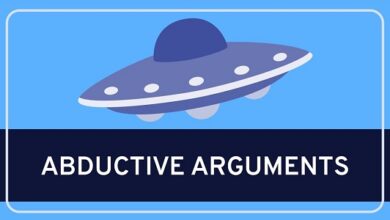Continuous texts
Continuous texts are contents that offer information and transmit it through sentences or phrases that together can form paragraphs, in the case of prose, or stanzas, in the case of verses. The information contained is offered uninterruptedly. In this article we will provide you information about continuous text.
Paragraphs can be part of larger structures, such as stories, novels, chapters, articles, essays, etc. Prose can be divided initially into two main branches: literary and non-literary.
Literary texts are made up of stories, novels, poems, etc. The non-literary ones, by all those who transmit legal, religious, technical, scientific, academic, journalistic information, etc.
This article is a continuous text of an expository and descriptive type, as it explains what a continuous text is and then its characteristics and typology are described. Continuous texts characteristics with types
Characteristics of continuous texts
Continuous texts have a series of characteristics that distinguish them from discontinuous ones:
1-The language
In continuous texts, textual language, the written word, is the main means of communication, although it may be accompanied by supporting material such as graphics, tables and other discontinuous texts.
2-Multiplicity
Continuous texts vary their form of expression and structure according to the function to which they have been intended by their authors: literary, informative, academic, advertising, etc.
3-Structure of the paragraphs
In continuous texts, paragraphs usually start with a main sentence, where the idea or theme is stated, followed by secondary sentences that clarify or complement the main idea.
4-Literary texts
Continuous literary or fictional texts fulfill an aesthetic function (where the language and the form are as important as the content), and they tell imaginary or reconstructed events in an imaginary way.
5-Non-literary texts
Non-literary continuous texts fulfill an informative function, with a language and style adapted to the type of information transmitted: descriptive, narrative, argumentative, instructive, etc.
6-Poetic continuous texts
The verses and stanzas also make up larger structures of varying length: epigrams, haikus, lyrical poems, epic poems, prose poems, sonnets, couplets, etc.
7-Prose and poetry
Like prose, poems can be narrative (epic), explanatory, descriptive, argumentative, etc .; but in them the form (the style and the rhythm) is as or more important than the content.
Unlike prose, poetry is more difficult to translate from one language to another, as you have to choose between being true to form or content.
Types of continuous texts
Continuous texts can be narrative, expository, descriptive, argumentative, normative and hypertext, among others. A single speech can include different kinds of texts; for example, in a novel (a narrative text), there may be descriptive, expository, and argumentative chapters.
1-Narrative texts
They are speeches that follow a temporal sequence, tell a story or a series of real or imaginary events. The most common structure of a narrative is usually a beginning or presentation of a situation or theme, the development or body of the story, and an ending or conclusion.
Narrative texts are stories, novels, epic poems, myths, legends, biographies, news, letters, chronicles and historical essays, among others.
2-Expository texts
Expository texts are all those that present concepts, processes, events, phenomena or ideas. In these texts, the paragraphs are generally structured by placing a main idea at the beginning, accompanied by complementary ideas to explain or clarify the main topic.
Expository texts are news, school texts, articles, scientific and humanistic essays, etc.
3-Descriptive texts
They are those that indicate the properties and particularities of a phenomenon, object or situation. They rely on the frequent use of adjectives and comparisons.
Descriptive texts are geographic texts, academic texts, manuals, biographical portraits, tourist guides, taxonomies (classify various things into groups with similar characteristics), etc.
4-Argumentative texts
Argumentative texts are those that try to persuade and convince the reader. Argumentative texts are also considered those that interpret and break down concepts, theories and different kinds of discourses.
Legal and philosophical treatises, literary essays, advertising texts, monographs, opinion articles and scientific works are considered argumentative.
5-Instructive texts
Instructional texts are those referring to procedures and steps to follow in assembling or handling objects; and the steps and protocols to be fulfilled in spaces or events.
Instructions for the use of medicines and objects, prescriptions, manuals, rules and norms of conduct in schools or residences, etc. are instructive.
6-Normative texts
The normative texts are those that establish the rules of action and conduct of organized societies. They are generally institutional texts.
The normative texts are the civil codes and the constitutions of the countries, decrees and laws, statutes of civil associations, etc.
- The constitutions of the countries and their various codes of laws are normative texts, because they contain the norms and rules that citizens must follow.
7-Hypertext
Hypertexts are fragmented discourses present on the internet that are linked to other texts. They are usually in a different color (blue, green, red) depending on the design of the web page. Concepts or notes such as those used in presentations and slides are also included.
Examples of continuous texts
Example of continuous descriptive and expository text
In an article on literary language ( www.lifeder.com/lenguaje-literario/ ).
“ Literary language is one that writers use in order to convey an idea, but in a more beautiful and aesthetic way to capture the reader’s attention. Depending on the structure and content, the literary language can be found in the lyrical, narrative, dramatic and didactic-essay genres ”. ( Continuous expository text )
“ This type of language can be used in prose or in verse . Likewise, it can also be verbal and used in daily communication. Literary language is a special language insofar as it prioritizes the way of transmitting the message rather than the message itself ”. ( Continuous descriptive text )
Narrative Continuous Text Example
The following excerpt from One Hundred Years of Solitude , by Gabriel García Márquez, is a continuous narrative text:
“Many years later, in front of the firing squad, Colonel Aureliano Buendía had to remember that remote afternoon when his father took him to see the ice. Macondo was then a village of twenty houses made of mud and cañabrava built on the bank of a river with clear waters that rushed down a bed of polished stones, white and huge like prehistoric eggs ”.
Example of argumentative continuous text
From the text “Philosophy of Socrates”, from the article www.lifeder.com/filosofia-socrates/
“The philosophy of Socrates (469-399 BC) has been so important in the history of philosophy that the Greek thinkers before him are known as pre-Socratics, and the later ones, major Socratics (Plato and Aristotle) and minor Socratics” .
Example of normative continuous text
From the Constitution of the Argentine Nation:
“Article 8 – The citizens of each province enjoy all the rights, privileges and immunities inherent to the title of citizen in the others. The extradition of criminals is a reciprocal obligation among all provinces ”.
Hypertext example
“The myth of Plato’s cave exposes ideas about human nature, sensible knowledge and that of the soul or spirit.”


